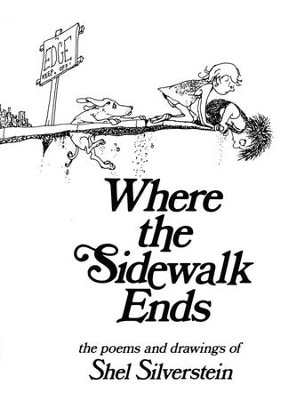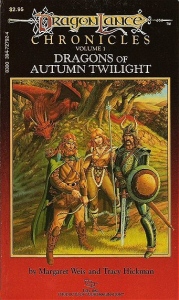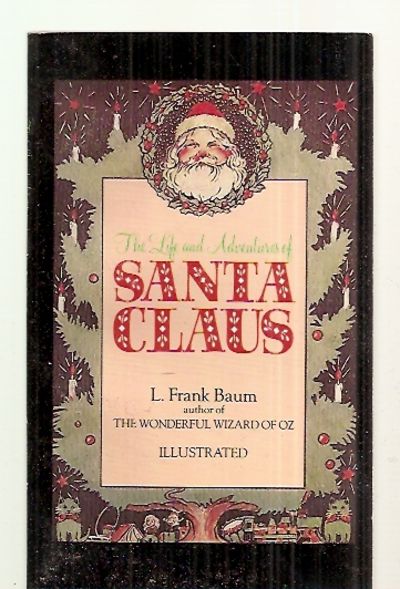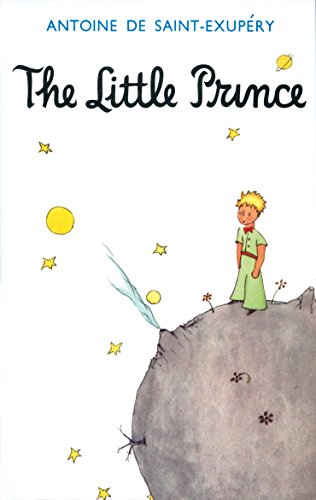Mr. Campbell’s Five Favorite Kids’ Books
At Homeschool Connections, I am known for teaching history. Today, however, I want to cross over into a different discipline to share some favorite chapter books from my childhood. These books engaged me and fired my imagination. They have stayed with me over the years and still hold treasured spots on my bookshelf today. This is my Top Five List of favorite children’s books!
 5. The Oz Books
5. The Oz Books
Like many others, I grew up watching the 1939 Wizard of Oz film and knew almost every line by heart. Multiple viewings did not diminish my love for the film. I especially loved the aesthetic of Oz and how the setting in each scene flowed seamlessly from the real sets in the foreground to the matte-board paintings in the background.
I remember being surprised to find out that the world of Oz was the subject of a book series by creator L. Frank Baum. Baum published fourteen Oz books between 1900 and 1920. Initially, I found the complete collection in my public school library, probably around 4th or 5th grade. Though I never completed the full series, I remember being enthralled by the sprawling world of Oz found in Baum’s books.
Looking back, I especially appreciate these books now because they are suitable for emerging readers. Many fantasy novels today are written for high schoolers, but the Oz books are fully accessible to any ten-year-old. I really value that.
 4. Where the Sidewalk Ends
4. Where the Sidewalk Ends
If you grew up in the 1980s, Shel Silverstein’s Where the Sidewalk Ends was a staple of children’s literature. First published in 1974, I didn’t know any kid my age who didn’t have a copy of this tucked away in their room somewhere. The poems of Shel Silverstein were disarmingly simple yet amusing, lending themselves to easy memorization.
I think I really appreciated the outlandishness of some of Silverstein’s concepts, which were almost Dr. Seussian. There were poems about “in the undergrowth, there dwells a Bloath who feeds upon poets and tea” or about the travails of being one inch tall, or a boy trying to auction off his annoying little sister. Then there was the sheer absurdism of “Ickle Me, Pickle Me, Tickle, Too” about a man who sails away in a flying shoe. Of course, in any Silverstein poetry book, one of the great draws is his whimsical and unique illustrations, which imbue the poems with such character.
I still remember the opening poem of Where the Sidewalk Ends, which was an invitation to the “dreamers” to let their imagination run free:
If you are a dreamer, come in,If you are a dreamer, a wisher, a liar,A hope-er, a pray-er, a magic bean buyer…If you’re a pretender, come sit by my fireFor we have some fla-golden tales to spin.Come in!come in!
I am amused by the line about “fla-golden tales to spin.” When I was a kid, I wondered what a “fla-golden” tale was. Now I see that Silverstein simply needed another syllable to make the line work, so he added a nonsense sound to flesh it out. Classic.
 3. Dragons of Autumn Twilight (Dragonlance Chronicles)
3. Dragons of Autumn Twilight (Dragonlance Chronicles)
I was a big fantasy nerd when I was a kid… and I still am. However, I did not enter into a love of fantasy through Narnia or Lord of the Rings. (I read neither series until I was 20). Rather, I entered through the world of Dungeons and Dragons, of which I was an avid player. Through the game, I came across the Dragonlance books that Margaret Weis and Tracy Hickman pioneered. Since then, they have spiraled into a massive expanded universe of 190 novels written by many authors.
The Dragonlance books are set in the fictional world of Krynn stocked with your generic fantasy races (elves, dwarves, gnomes), mythological creatures like minotaurs and dragons, and a few races original to Krynn (kender and Irda).
Dragons of Autumn Twilight, published in 1984, was the first book in the Dragonlance Chronicles. It is a cycle that tells the tale of the quintessential role-playing party led by Tanis Half-Elven to stop the machinations of the devious Dragonlord Verminaard from subjugating Krynn. With swords, dragons, wizards, magical relics, and monsters, this book opened my mind to the excitement and possibilities of the fantasy genre. In fact, it influenced my own creative writing profoundly in ways I still draw on to this day.
I first read Dragons of Autumn Twilight when I was about 12 and was enthralled by it. Rereading it as an adult, I see it is basically a long commercial for the Dragonlance Dungeons and Dragons materials. And honestly, the content is more mature than I would recommend to a 12-year-old today. The world is essentially pagan, with a host of good and evil gods warring with each other, with the denizens of Krynn caught in the middle.
So don’t expect Catholic themes beyond the very general messages of friendship, loyalty, good vs. evil, etc. Therefore, I only recommend this book with qualification. I’d say it is for readers over 14 who have experience reading various fantasy genres. However, it still holds up well if you can take it for what it is. I will always be grateful I was exposed to it since it proved to be so formative in my own creative writing.
 2. The Life and Adventures of Santa Claus
2. The Life and Adventures of Santa Claus
L. Frank Baum has another entry on my top five list with The Life and Adventures of Santa Claus, published in 1902. I have read this book many times and I still have the battered copy of my childhood. Additionally, I have read it to my own children.
I absolutely love this book because it creates a mythos for Santa Claus completely different from the familiar ubiquitous North Pole stories. It was not until 1931 that Coca Cola “fixed” the image of Santa Claus with the famous Haddon Sunblom depiction, Baum was writing decades before there was any “canonical” version of Santa.
And what a wild world Baum’s Santa Claus lives in! It follows the life of Claus from boyhood, raised by mythical creatures in the magical Forest of Burzee. We meet all sorts of fantasy beings: Knooks, Fairies, Ryls, and Pixies. Claus’s efforts to do good for human children are thwarted by evil Awgwas, demonic creatures who hate humanity. There are dragons, giants, and goblins. Claus is aided in his endeavors by his mentor Ak, the Master Woodsman of the World.
This story provided a fascinating alternative Santa Claus legend that I adored. There was also a 1985 claymation version of the story that was fabulous.
 1. The Little Prince
1. The Little Prince
The top ranked book on my list of childhood favorites undoubtedly goes to Antoine de Saint-Exupéry’s 1941 classic The Little Prince. My mother gifted The Little Prince for Christmas to me in 1988 when I was eight-years old. I still have this copy, with my mother’s Christmas dedication written on the inside cover.
I did not understand The Little Prince when, as an eight-year-old, I first peered through the pages of this strange story about a space boy who lives on a tiny planet. Thankfully, I revisited the story when I was a few years older and found it deeply moving. It is a story that deals with themes of friendship, love, innocence, loss, and finding meaning in life. Antoine de Saint-Exupéry’s existentialist view of life drips off every page in a way that both entertains and provokes deep thought—sometimes gut-punching you with sentimentality that is profound without being cheap.
The Little Prince is the only one of these children’s books I continue to read, not just to my kids but for my own sake. I have come back to it at various stages of my life and find that it speaks to me more deeply each time. I believe that is what Saint-Exupéry intended. We realize we are all this little prince standing alone on our own little planet looking for love and meaning.
Conclusion
Well, those are my top five favorite books from childhood! These works all captured my imagination in their own way and have stuck with me over the years. What about you? What are your favorites from childhood? Join us at our Catholic Homeschool Community to get a discussion going.
Next time, I will revisit my favorite works of fiction as an adult.






